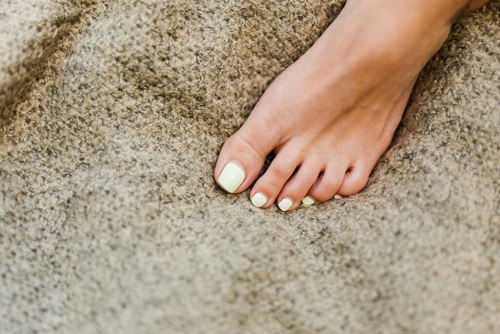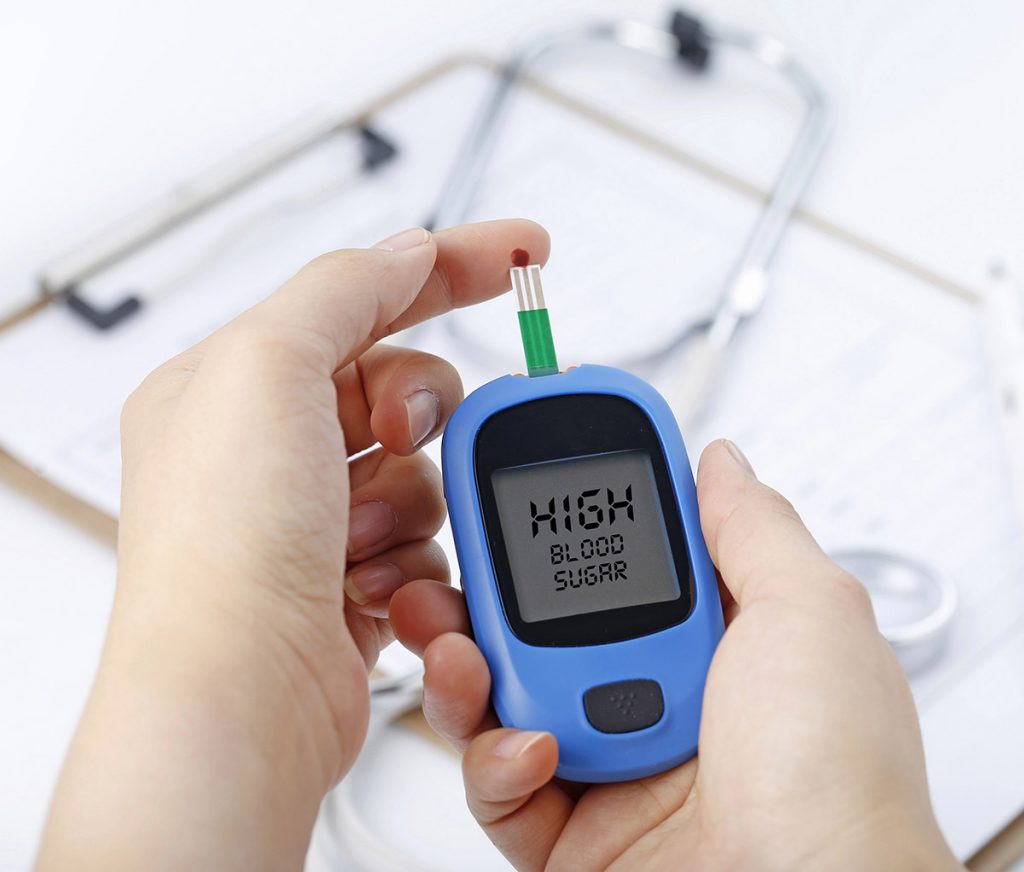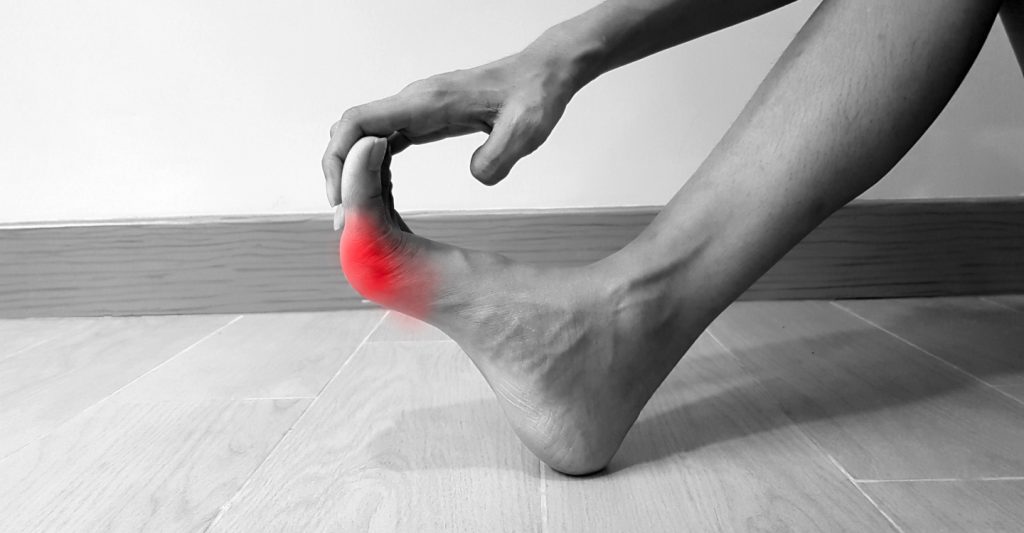Numbness or “pins and needles” in the toes can be caused by a number of conditions like poor circulation or nerve issues. It might be a temporary condition that occurs when you sit in a way that restricts the blood flow to your toes. However, other causes can be more serious, which range from diabetes to frostbite.
Numbness in the toes or feet is a familiar feeling that many people experience at some point. This is the result of the affected area losing or feeling numb, and it can be debilitating and range from very light to heavy. On-and-off numbness may not be serious, but if it happens repeatedly or constantly, there may be an underlying reason for persistence that requires medical investigation.
It’s essential to understand why toe and foot numbness frequently occurs, the symptoms, and how best to eliminate swelling toes and feet. First, you should recognize when numbness might indicate a more serious medical condition requiring immediate attention. Second, by understanding the root causes of numbness in your body, you can participate effectively in planning whatever lifestyle changes or self-care management methods may benefit you and hopefully reduce the chance of further complications due to lack of awareness.

Understanding numbness in toes and feet can help people take positive measures to look after their foot health and overall health. Can bunions cause numbness? Can bunions cause neuropathy? This article will explain the various causes of numbness in toes and feet, the common symptoms, and what can be done to alleviate discomfort and improve quality of life.
Understanding Numbness in Toes
Numbness is the sensation of reduced or absent feeling in a specific body part, in this case, our toes. It may feel like pins are pricking at your foot, or a tingling sensation (like insects crawling on the skin) can emerge here and there. Sometimes, the affected area feels weak.
One might wonder, “Why is my big toe numb? Numbness is when the normal functioning of sensory nerves is blocked or disturbed. This cuts off the flow of nerve signals back and forth between the brain and any affected part of your body.
Common Causes of Numbness in Toes
Nerve Compression
Sitting or standing in uncomfortable positions for long periods, varicose veins, or a weak or paralyzed foot can create pressure on the foot’s nerves, leading to numbness in the toes. From the spine downward to the toes, nerve entrapments occur in any number of spots along this path. People who suffer from bunions may develop numbness along the inside of their big toe due to the bunion stretching and injuring the nerve. Neuromas are benign enlargements of a nerve to the toes that can initially cause burning and ultimately numbness to toes.
Peripheral Neuropathy
This is a condition caused by damage to the peripheral nerves of your body that can result from diabetes, malnutrition, chronic alcoholism, toxic poisoning (including arsenic, mercury and lead), Lyme disease (a spirochete) or tumors or medications such as chemotherapy agents.
Diabetes
Diabetes is a common cause of peripheral neuropathy or damage to the nerves. As time goes on, people with diabetes may suffer from high blood sugar levels that can lead to long-term nerve damage. This results in symptoms such as burning and then numbness and tingling in one’s toes with peripheral neuropathy, a potentially severe complication for anyone suffering from this disease that requires strategic intervention to prevent further damage. Feeling a sensation of a sock bunched up in your shoe, tightness, feeling cold are signs of neuropathy.
Circulatory Issues
Conditions like peripheral vascular disease or arteriosclerosis can slow blood flow to a person’s toes or feet. This means that both tissue and nerves are liable to become damaged. Because of a diminishing blood supply, oxygen and nutrients are denied to the nerves, resulting in numbness, coldness and other changes within the sensory system.
Nerve Damage
Nerves that are damaged, whether by being pinched or cut through in accidents, hidden syndromes or illnesses, can directly lead to numb toes. Conditions such as sciatica (sciatic nerve), protruding discs or entrapment of a nerve, for example, will compress and, therefore, damage nerve pathways, causing sensory disturbances in your feet and toes over time.
Frostbite
Being subjected to freezing temperatures for a prolonged period of time can lead to frostbite. When your toes begin to freeze, they will become numb. Severe frostbite can lead to amputation, but mild forms of frostbite can often be treated successfully.
The Importance of Promptly Addressing Numbness in Toes
As soon as numbness in the toes occurs, seeking medical attention for several reasons is essential. First, medical treatment at this point may help doctors associate and head off any underlying medical conditions that could produce the symptoms, such as “Why is my big toe numb?”. Without care, these conditions could deteriorate, leading to nerve damage, foot deformities and loss of mobility.
Secondly, acting quickly to address the problem makes one more comfortable and improves his quality of life. This means that the individual, in addition, pays little heed to sensation changes in toes, which could well bring further problems and interfere with the effectiveness of treatments. It is, therefore, essential to seek medical evaluation and intervention without delay if numbness is determined from the outset.
Can Bunions Cause Numbness?
Can bunions cause numbness? Bunions, which are bony protrusions that pop up at the base of your big toe, indeed may lead to numbness in your toes. As bunions change the structure of your foot, they can compress your nerves. This compression can bring on feelings of tingling or numbness (and sometimes even pain) throughout entire toes. This raises the question: can bunions cause numbness in other toes?
Although severe bunions themselves are not a cause of neuropathy (the condition where nerves don’t function properly), they can undoubtedly exacerbate nerve compression and seem to be adding a cacophony of neuropathic symptoms to the toes. Neuropathy is the damage or dysfunction of functioning, peripheral nerves.
Lifestyle Factors Contributing to Toe Numbness
Many lifestyle factors can contribute to toe numbness. Among them are:
- Being sedentary or walking too long
- Shoes that fit poorly or are tight because they have not been adapted to the shape of the foot
- Repetitive activities that strain the feet
- Smoking leads to damage of the circulation and nerves
- Poor body posture or standing for a long time puts a lot of pressure on the feet
Properly treating lifestyle factors, in addition to treating primary conditions that cause toe numbness, is instrumental in alleviating various symptoms and keeping feet in good health overall.
Symptoms of Numbness in Toes and Feet
Sensory Changes in Affected Areas
When toes or feet lose their feeling of touch or other sensory experiences, it becomes inevitable to have numbness in them. In the toes, people may have difficulty discerning touch (including pain), changing temperatures, or feeling pressure from something like standing or sitting down. This can cause many problems, ranging from mild weakness to near-total paralysis. This may depend on the cause of your numbness.
Tingling or Burning Sensations
A burning or itching sensation in the toes and feet and numbness also occurs. It may well only be an occasional problem, but it can still affect the quality of life significantly. Sometimes, tingling occurs in areas when nerve-related conditions such as peripheral neuropathy or nerve compression are present alongside the much more common numbness.
Weakness or Loss of Coordination
After numbness in the toes and feet sets in, there may also appear to be a lack of strength or coordination in the affected limb. People find they cannot walk straight, stand up properly or move subtly with their feet, which leads to more serious problems. Weakness and loss of coordination will inevitably affect mobility and the ability to perform ordinary activities of daily life, thus lowering one’s overall quality of life.
Potential Complications if Left Untreated
Possible complications from the loss of sensation in your toes and numbness include:
- Increased Risk Of Injuries: Reduced sensation in the feet increases the risk of injuries such as cuts, bruises and burns, as individuals may not feel pain or notice trauma to the affected area.
- Foot Deformities: Chronic numbness can contribute to the development of foot deformities like hammertoes, claw toes, or Charcot foot, particularly in individuals with health conditions such as diabetes.
- Impaired Mobility: Loss of feeling and physical weakness in the toes and feet is a significant obstacle to independent living. It affects balance so that if you take a step, you cannot hold your position anymore; it is the same thing for holding objects, etc.
- Deteriorating Nerve Damage: Peripheral neuropathy and other illnesses causing foot numbness are progressive. Left untreated, they may lead to further sensory and motor deficits as nerve damage worsens.
- Life Quality Degradation: The symptoms and distress associated with persistent numbness can significantly reduce an individual’s quality of life. It brings discomfort and functional limitations and causes psychological distress as well.
Treatment Options for Numbness in Toes
Lifestyle Modifications: Footwear, Activity Adjustments
The proper choice of shoes, which fit snugly but not too tight, can relieve pressure on the foot and back and maybe spare them discomfort. Avoidance of high heels, tight, narrow-toed, pointed, and hard and uncomfortable shoes can prevent further exacerbation of numbness and pain.
Tight shoes can compress the nerves in the toes, leading to increased numbness. It is essential to choose shoes with good cushioning and arch support for comfort and to reduce pressure on the feet.
Adjusting routines or work to reduce the repetitive stress on one’s feet and lessen the time spent standing or walking continuously will help the symptoms go away.
Devices and Braces
Custom orthotic shoe insertions or modifications can help redistribute pressure on the feet, correct alignment problems, and provide backing that will reduce nerve compression and lessen numbness. Ankle-foot orthoses (AFOs) or braces may be used to correct the foot and gait mechanics and protect against future nerve damage.
Vitamins and Natural Remedies
Some vitamins such as alpha lipoic acid and benfotiamine can alleviate some burning sensations that may be felt with neuropathy. Other natural remedies such as capsaicin, a chili pepper, have properties that help to alleviate the pain associated with nerve injuries.
Pain Management Techniques
Heat / Cold Therapy: Physical therapy is an effective option to treat numbness in the toes. Heat or ice packs applied to the affected area reduce swelling, making it feel more comfortable.
TENS: TENS (Transcutaneous Electrical Nerve Stimulation) delivers low-voltage electric impulses using a tiny device implanted in the skin, which can reduce the pain and conductivity of injured nerves.
Massage Therapy: Soft massage techniques can relieve pain, increase blood circulation, and help relax the muscles in one’s feet and toes, alleviating numbness or discomfort.
Conclusion
Numbness of the feet and toes are due to multiple factors, such as nerve compression, peripheral neuropathy, or even arteriosclerosis. It often presents with sensory changes, tingling sensations, vibratory sensations and weakness and can lead to certain complications if left untreated. Understanding the causes, signs, and treatment options for toe numbness is essential to managing and preventing complications successfully.
If you feel numbness in your toes and feet, it is essential to get professional help immediately. A healthcare provider can assess the underlying problem thoroughly, diagnose it accurately, and then suggest a suitable treatment method.
Proper foot care and healthy living prevent toe numbness and related foot problems. This includes maintaining good foot hygiene, wearing suitable shoes, maintaining a healthy weight, and managing underlying medical conditions well. Regular visits to your healthcare provider and following preventive measures can help maintain peak foot health and avoid the start or worsening of toe numbness.
Having time and attention for information, getting prompt medical help, and taking care of your feet and health will eliminate the chance of toe numbness and allow you to maintain your feet in optimal health and condition well into the future.
Numbness in Toes Frequently Asked Questions
Can diabetes cause numbness in toes?
Numbness and tingling in the toes (and hands) are common symptoms of type 2 diabetes. Even if you have not been diagnosed officially with type 2 diabetes, numbness and tingling in the toes may be a sign that you’re developing the condition.
What causes numbness in toes?
There are many types of conditions that can cause numbness in the toes including diabetes, neuropathy, nerve compression, bunions, and frostbite.
Can neuropathy cause numbness in toes?
Nerve damage, known as neuropathy, is another culprit of foot and toes numbness. A type of neuropathic condition called Morton’s neuroma causes nerves in the toes to thicken leading to foot pain and sensation loss. Tarsal tunnel syndrome is another neuropathy condition that causes foot and toes numbness.
Can frostbite cause numbness in toes?
Being subjected to freezing temperatures for a prolonged period of time can lead to frostbite. When your toes begin to freeze, they will become numb. Severe frostbite can lead to amputation, but mild forms of frostbite can often be treated successfully.
How do you treat toe numbness?
In most situations, wearing proper footwear and keeping your feet protected from extreme cold or heat will prevent the development of conditions that often lead to numbness in the toes.
Visit Foot, Ankle & Leg Vein Center
If you are feeling numbness in your toes, it’s essential that you get a doctor’s opinion. Immediate treatment may be necessary in cases of chronic numbness.
The Foot, Ankle & Leg Vein Center is your local podiatrist in Boynton Beach and Boca Raton, FL. We diagnose and treat all kinds of foot, ankle, and leg vein pain, including numbness in toes and feet.
Dr. Jason Gold, DPM, and Dr. Jodi Schoenhaus, DPM, are foot, ankle, and leg vein specialists with extensive experience in sports medicine. Contact us today and have peace of mind knowing that your symptoms and conditions will be treated and bring you back to peak condition.
References
- Bodman MA, Varacallo M. Peripheral Diabetic Neuropathy. [Updated 2023 Sep 4]. In: StatPearls [Internet]. Treasure Island (FL): StatPearls Publishing; 2024 Jan-. Available from: https://www.ncbi.nlm.nih.gov/books/NBK442009/
- Bodman MA, Varacallo M. Peripheral Diabetic Neuropathy. 2023 Sep 4. In: StatPearls [Internet]. Treasure Island (FL): StatPearls Publishing; 2024 Jan–. PMID: 28723038.
- Hammi C, Yeung B. Neuropathy. [Updated 2022 Oct 15]. In: StatPearls [Internet]. Treasure Island (FL): StatPearls Publishing; 2024 Jan-. Available from: https://www.ncbi.nlm.nih.gov/books/NBK542220/
- Slouma M, Ben Dhia S, Cheour E, Gharsallah I. Acroparesthesias: An Overview. Curr Rheumatol Rev. 2023 Oct 27. doi: 10.2174/0115733971254976230927113202. Epub ahead of print. PMID: 37921132.
- van Deursen RW, Simoneau GG. Foot and ankle sensory neuropathy, proprioception, and postural stability. J Orthop Sports Phys Ther. 1999 Dec;29(12):718-26. doi: 10.2519/jospt.1999.29.12.718. PMID: 10612069.






